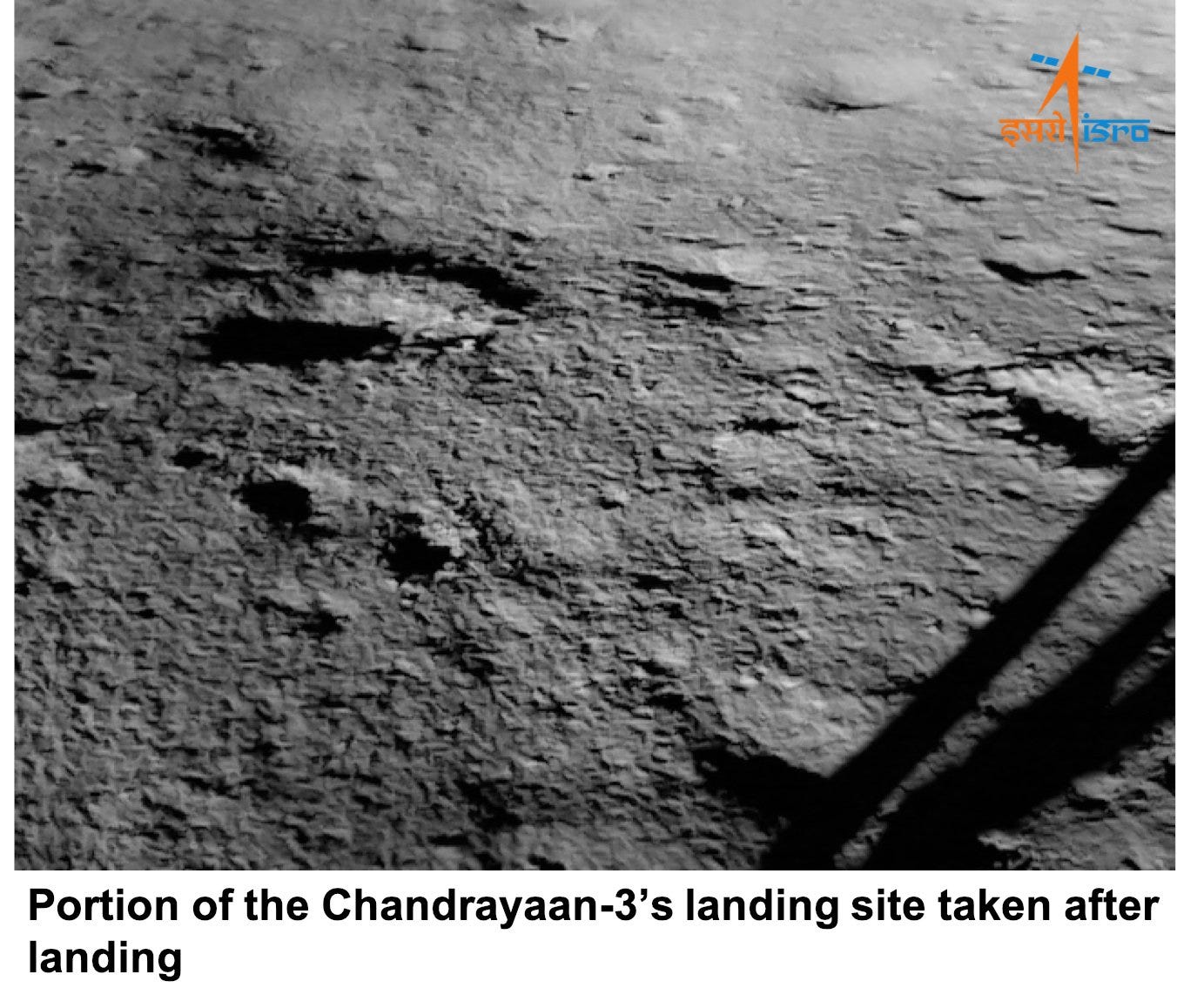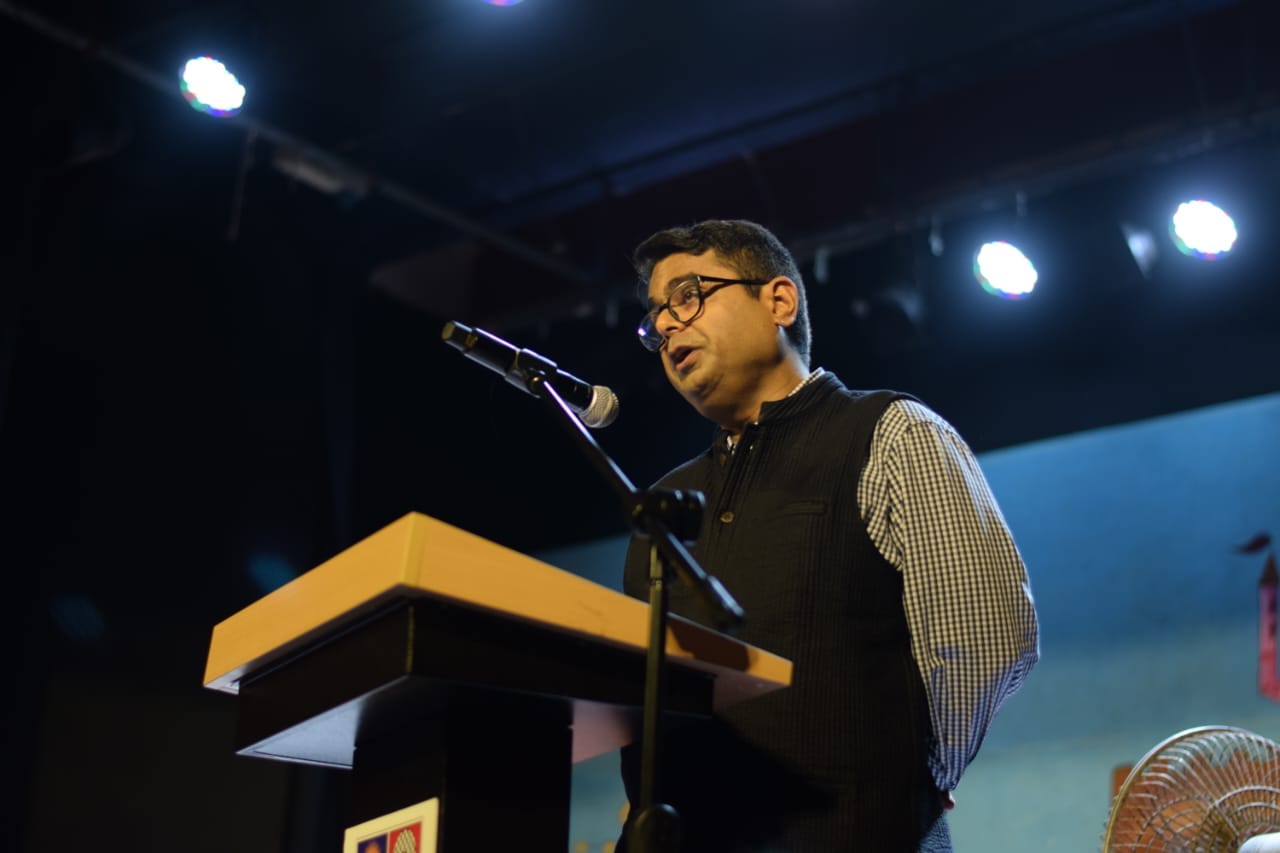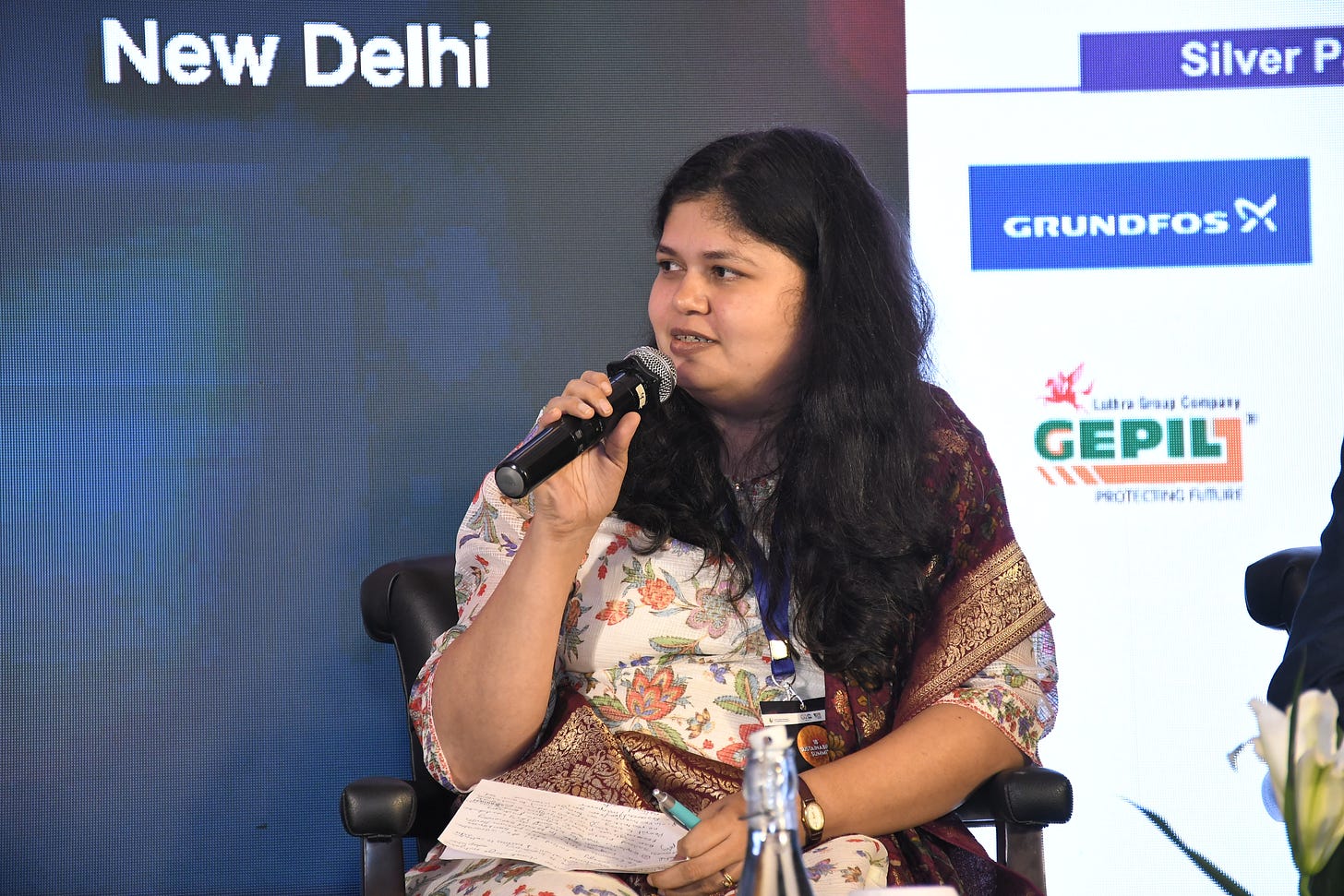Because It’s Next
In Season 2, Episode 9 of The West Wing, the somewhat overly idealistic but brilliant political drama series created by Aaron Sorkin, two characters named Sam Seaborn and Mallory O’Brien (they are shown to be in a relationship at the time) are seen talking about space missions.
The US has just lost a Mars-bound spacecraft named Galileo, and Mallory (the daughter of the White House Chief of Staff) tells Sam (who works at The White House in a senior role) she is sorry about the loss. Here’s how the dialogue goes:
SAM: They’ve got a lot of tests they can still try.
MALLORY: How much money is it gonna cost to try them?
SAM: Don’t start with me.
MALLORY: I’m asking as a taxpayer. It cost 165 million dollars to lose the thing. How much more money is it gonna cost to make sure you’re never gonna find it?
SAM: I don’t know, Mallory, but we certainly won’t divert any municipal tax dollars, which are always best spent on new hockey arenas.
MALLORY: No, it’s best spent feeding, housing and educating.
SAM: There are a lot of hungry people in the world, Mal, and none of them are hungry because we went to the moon. None of them are colder, and certainly none of them are dumber ‘cause we went to the moon.
MALLORY: And we went to the moon. Do we really have to go to Mars?
SAM: Yes.
MALLORY: Why?
SAM: Because it’s next. For we came out of the cave, and we looked over the hill, and we saw fire. And we crossed the ocean, and we pioneered the West, and we took to the sky. The history of man is hung on the timeline of exploration, and this is what’s next.
We can reference this scene each time someone asks why India (or any other country, for that matter) spends hundreds of crores (or billions of dollars and euros) each year on space exploration. But this was not our first thought at 6.04 pm IST on August 23 when India’s Chandrayaan-3 landed in the south pole region of the moon; it was actually the exchange between Cuthbert Calculus and Captain Haddock in ‘Destination Moon’ (Book 16 of Hergé’s famous Tintin comic book series), where, on Page 39, the latter — frustrated by the goings-on in the country of Syldavia where humankind is getting ready to send a rocket to the moon — tells the until-then soft-spoken professor that he is “acting the goat”.
“Acting the goat, am I?” Prof Calculus says and loses it. He goes on a two-and-a-half-page rant that climaxes with an amazing piece of Hergé art — a full-page panorama illustration of the rocket launch site, and the venerable scientist then explains why going to the moon is so important to him, and to humanity.
The reason we are reminded of this amazing piece of comic book scripting is that, while the scientists and engineers at the Indian Space Research Organisation (ISRO) did not certainly go on a massive rant after they lost Chandrayaan-2’s Vikram lander on September 6, 2019, it would have taken an equal amount of Cuthbert-Calculus-like determination and audacity to overcome the grief of the loss of Vikram to a software glitch. They not only defeated despondency, but they silenced every single sceptic around the world (many remembered the seemingly racist and classist cartoon by Heng Kim Song in The New York Times in 2014 soon after ISRO’s successful Mars mission).
Chandrayaan-3 is easily the comeback story of the decade.
And so it came to be, that, on the evening of August 23, 2023, the 1.4 billion hearts that had stopped for about 10 seconds before ISRO chairman S Somanath officially announced that Chandrayaan-3 had successfully soft-landed on the southern polar region of the moon, they began beating again. There was a cinematic silence across the country for those 10 seconds before the collective roar of a civilisation, as it were.
India was finally on the moon.
At Takshashila, too, we were over the moon! Our folks have been busy in the run-up to the Chandrayaan-3 launch on July 14 and beyond. Our fellows and research analysts have been at it, writing Op-Eds, recording videos and appearing on news TV to explain what this means to not only Indians but the world at large.
Aditya Ramanathan wrote an Op-Ed for the Times of India on why India must prepare for lunar geopolitics, and not just because we ask what’s next. Aditya explains this in the context of Russia relaunching its moon programme along with a string of other countries getting into the moon race. He did not stop at just that, he wrote one for the Hindustan Times as well, explaining the economic potential of lunar exploration.
“The potential of the space economy hasn’t escaped India’s attention. In April, the government announced a landmark Space Policy, which allows the private sector access to a range of space activities, including rocket launches, satellite operations and even asteroid mining. The policy makes the Indian National Space Promotion and Authorisation Centre (IN-SPACe) the sole agency for authorising space activities and seeks to create a level playing field between the private sector and Isro. A separate policy on foreign direct investment is also expected shortly.”
India is already on it, as Aditya writes.
“India will need active diplomacy to ensure its private companies get to participate in multinational projects, whether in low Earth orbit, the Moon or beyond,” he says. “Chandrayaan-3 must only whet India’s appetite to profit from the heavens.”
You can read the Hindustan Times Op-Ed here.
Not satisfied with just writing on it, Aditya joined space scientist and author Dr Chaitanya Giri of Interstellar, and Omkar Nikam, a France-based space and defence expert for a YouTube podcast to discuss what this means. You can watch the video here.
Dr Nithiyanandam, head of Takshashila’s Geospatial Programme, appeared on not one, not two, but three Gujarati TV news shows, taking his regional language science communication endeavour beyond Tamil (we spoke about his Tamil public policy foray last week). You can watch the Gujarati shows here, here and here (Nithiya spoke in Hindi and English, so a working knowledge of Gujarati is not needed).
Another Few BRICS In The Wall
In the run-up to the latest BRICS summit in South Africa in the last week of August, the one thing that was on everyone’s mind was its expansion. As Anushka Saxena wrote in her brilliant Op-Ed for Deccan Herald, more than 40 countries had applied to become members of the informal grouping (BRICS while being a potential geopolitical rival to the G7, was a term coined by Jim O’Neill of Goldman Sachs in 2001.
The first meeting of foreign ministers of the original four countries – South Africa joined in 2010 – took place only in 2006), but towards the end of the Johannesburg talks, only six were admitted — Saudi Arabia, Iran, Ethiopia, Egypt, Argentina and UAE. The new BRICS takes shape on January 1, 2024.
Anushka lists several reasons for countries wanting to be part of BRICS. One, is the branding. “Countries in the Global South that are vying for a greater say in global governance may find membership of such a grouping attractive,” she says.
Second, there are multiple economic opportunities that accompany membership in BRICS, and finally, there is a sense of equality between countries that comes with BRICS membership. Because the grouping has a flat hierarchy, there is consensus and equal say on all matters, and any finalised decision is the best common minimum all member countries agree on.
You can read Anushka’s piece here.
Manoj Kewalramani, the head of Takshashila’s Indo-Pacific Programme, appeared on a podcast by The New Indian Express on the very same topic, where he was asked some searching questions by senior journalist Neena Gopal. Manoj pointed out how there is likely going to be a tussle between China’s economic and political clout (China’s GDP is more than the GDP of the remaining four combined) and the rest. “It (China) wants to push back against Western ideas,” Manoj says, and it wants to use BRICS to achieve some of its geopolitical goals, including pushback against Western interference in its human rights record, or creating alternative payment systems.
Later, senior academic and international affairs expert Dr Harsh Pant joined the discussion and added his points of view on BRICS.
You can watch the podcast here.
Manoj and Anushka were later joined by two other Takshashila colleagues — Kingshuk Saha and Amit Kumar — in a larger discussion on what BRICS means to India. That episode — part of Takshashila’s ‘All Things Policy’ podcast series — can be found here.
Manoj was busy through the BRICS Summit week. Not perhaps at the same level as the bureaucrats organising Prime Minister Modi’s intensive schedule in Johannesburg, but in addition to the above appearances, he was interviewed by the Italian publication La Stampa and German business publication Handelsblatt. We have not independently confirmed it, but he says he still found time to watch one or two Netflix shows. Who knows!
Blunt Force Trauma For The Greater Good
Anyone who has studied or worked at Takshashila knows that its founder-director Nitin Pai, while being nice and all that, can be brutal when it comes to expressing views on burning issues. Ajay Shah, a polymath if there ever was one, is the same.
Therefore, when the two collaborate to write an Op-Ed on the industrialisation of IIT coaching and its often cruel and horrific consequences (in 2023 alone, 20 teenagers killed themselves in the city of Kota, where the regimented IIT coaching ecosystem has pushed children to the brink), it makes for compelling reading.
This paragraph should haunt us for a long time:
“The present JEE environment filters for households and kids who are able to spend many lakhs of rupees on coaching classes, and have the culture of regimentation from age 14 to 17. How much regimentation is required? This year so far, 20 children in Kota have committed suicide, and local government officials are forcing hostels to modify their fans so that a load of above 20 kg is not supported. We can only imagine how much dulling of the imagination is induced by this level of regimentation. The tendrils of curiosity, dissent, imagination, creativity, and risk-taking are likely to be crushed in these years. We are creating followers, not leaders.”
They are also emphatic about how test prep is not education. “Education allows a person to critically analyse information, make good judgements, and apply knowledge in new domains,” they write.
“While a genuine understanding of science, mathematics, and logical reasoning can result in good scores in entrance examinations, the converse is not true. The overwhelming focus on preparing for entrance examinations, particularly the JEE, is now creating generations of Indians with shiny credentials but weak foundations.”
You can read their hard-hitting column here. We can only hope that authorities, parents and everyone involved in the IIT-JEE machinery react and respond to Nitin’s and Ajay’s blunt force trauma Op-Ed.
Freedom of Speech in an Increasingly Polarised Society
Takshashila’s Sachin Kalbag was invited by St. Xavier’s College in Mumbai to deliver a speech on freedom of speech and expression in India for their annual pan-India college festival Malhar.
Sachin, a journalist of 29 years, has had his run-ins with the authorities (“Too many to count,” he says) during the course of his career over this key constitutional freedom. At Malhar, too, he pulled no punches.
He said in his speech:
Freedom of speech is the basis for freedom of the press in a democracy. It is about asking for accountability of the people in power that you, the citizens, have voted in. It is about questioning laws and decisions that the government makes, or the state executes.
What we need to be sceptical about, is government — not this government or that government. Just government. We also need to be suspicious about a media that does not question government and gives it a free hand in doing what it wants.
What is the fundamental responsibility – in fact, the only responsibility – of the media in any democracy? It is to hold people accountable, to act as a check-and-balance against injustice, against unfair practices, against excesses, against morally disdainful and legally wrong acts of those in power. Or powerful people. The media should talk for you and me, as our representative, not that of people in power.”
Wait, There’s More!
Dr Shambavi Naik, the head of Takshashila’s Research division, was invited to speak at the 18th Sustainability Summit in New Delhi on August 22. She spoke on how biotechnology can be a critical enabler in India's quest for a green and sustainable future.
She noted that
“India has to balance sustainable development with double digit economic growth. Biotechnology offers relatively cleaner solutions to drive the economy, but this can be achieved only through an integrated bioeconomy strategy.”
Takshashila’s Sarthak Pradhan had a splendid podcast episode on fiscal prudence of Indian states with Dr Jayaprakash Narayan. Fiscal profligacy in the form of short-term populism and unfunded defined benefit–based old pension schemes present an immediate threat to India’s public finances. It has the potential to hamper India’s growth in the long run. How can it be ensured that policymakers do not prioritise short-term political gains at the cost of long-term economic growth? This was the central question of the engaging discussion.
You can listen to the podcast here.
Against the backdrop of Germany releasing its strategy on China, outlining the challenges China poses and setting forth an agenda regarding how it intends to cooperate with it, it was important to understand the nuances of Europe’s relationship with India’s eastern neighbour.
Manoj Kewalramani and Bharat Sharma did just that in their blog post for Takshashila where they say that it is not just Germany, but Europe as a whole has toughened its stance on China.
They write:
“That said, for both Germany and the European Union (EU), de-risking does not imply de-coupling. The argument for de-risking is that European economies must be shielded from critical vulnerabilities that impact national and economic security, but at the same time, such shielding must not be equated with substantial economic disengagement. That disengagement, Leyen notes in the speech, is not in Europe’s interest. The emphasis on this distinction underscores Europe’s need to balance economic interests with a partner that poses significant security risks.”
Read their blog here.
Nitin Pai, co-founder & director of the Takshashila Institution participated in the ISAS Panel Discussion: Reshaping Relations - The US-India Tech Partnership on Tuesday, August 17, 2023. Dr Karthik Nachiappan, Research Fellow, Institute of South Asian Studies, National University of Singapore chaired the panel, and Arindrajit Basu, Non-Resident Fellow, Centre for Internet & Society, India; and PhD Candidate, Leiden University, also participated.
The panel focused on Indo-US technology relationship and partnership in the wake of Indian Prime Minister Narendra Modi’s recent visit to the US that resulted in critical announcements to advance bilateral technological cooperation.
You can watch the video here.
Takshashila had an amazing two days in New Delhi where our PGP workshop took place. Public policy, legal and media superstars addressed our students for two straight days of intense discussions that ranged from the State of Indian Media to India’s Employment Scenario, and from India-China Relations to the State of the Indian Judiciary.
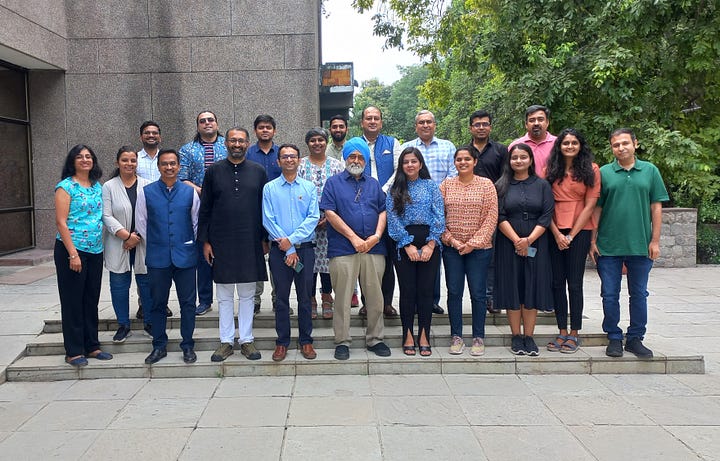
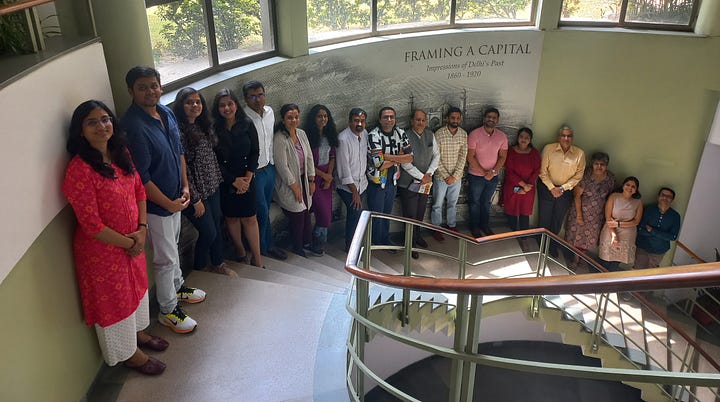
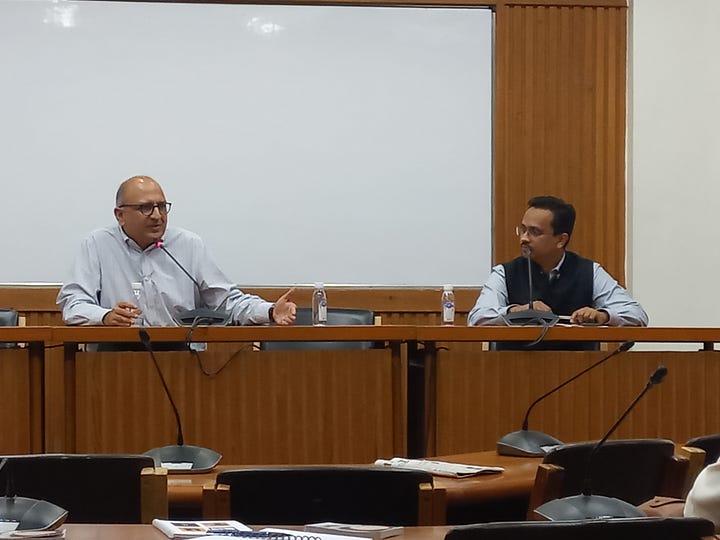

Guest speakers included Pratap Bhanu Mehta, Amit Baruah, Saon Ray, Montek Singh Ahluwalia, Radhicka Kapoor, Abhinav Sekhri, Poonam Gupta, Devashish Dhar, and Alka Acharya. We signed off with an entertaining and engaging AMA with Takshashila’s Pranay Kotasthane and Anupam Manur.
That’s all for this week. Take care!


